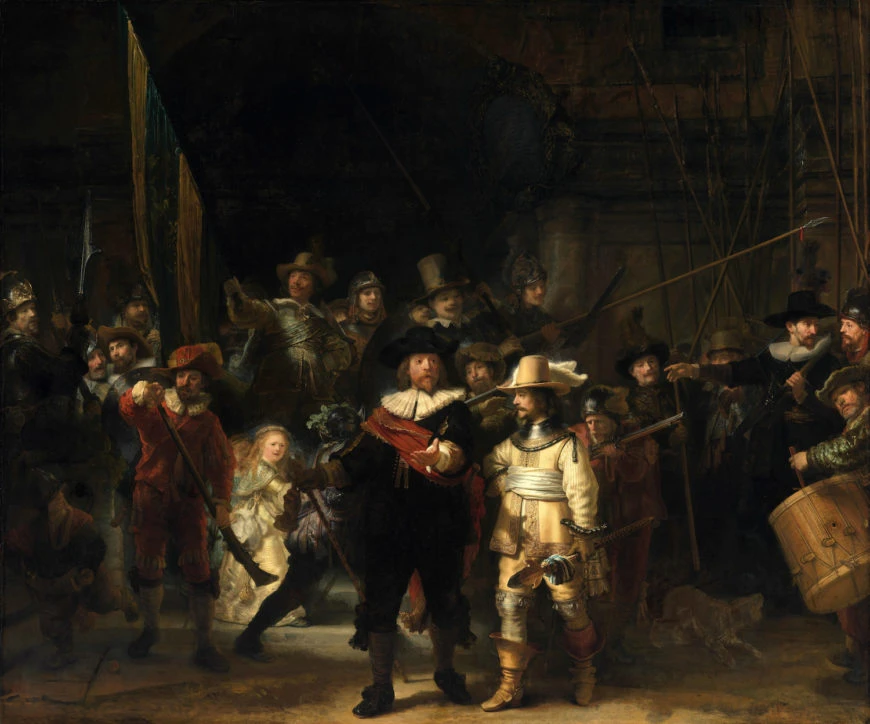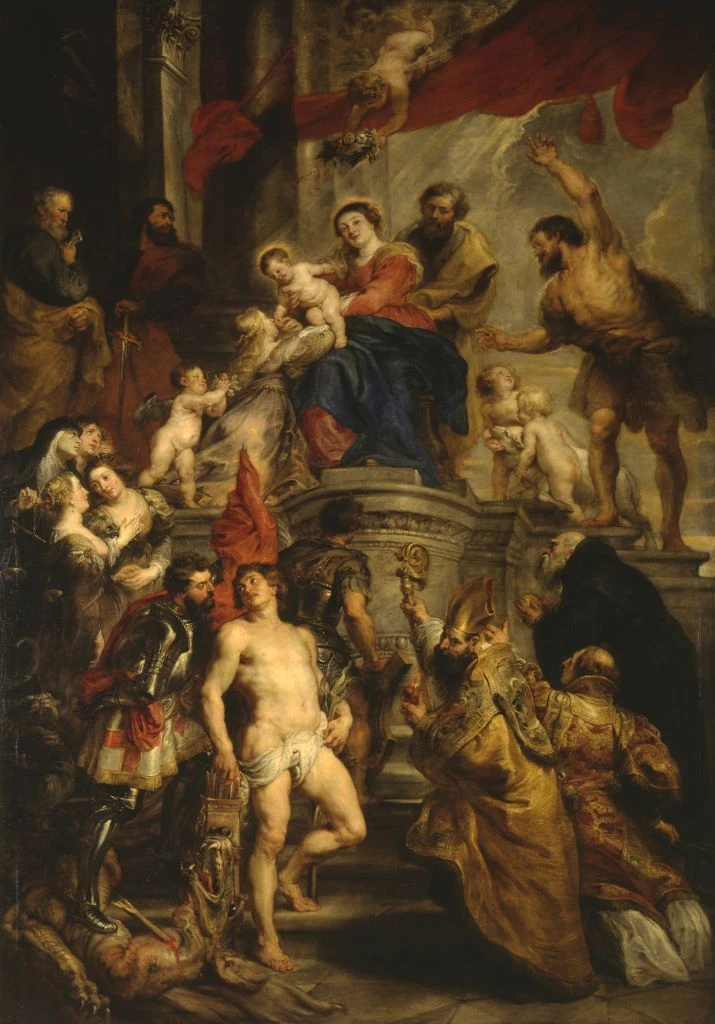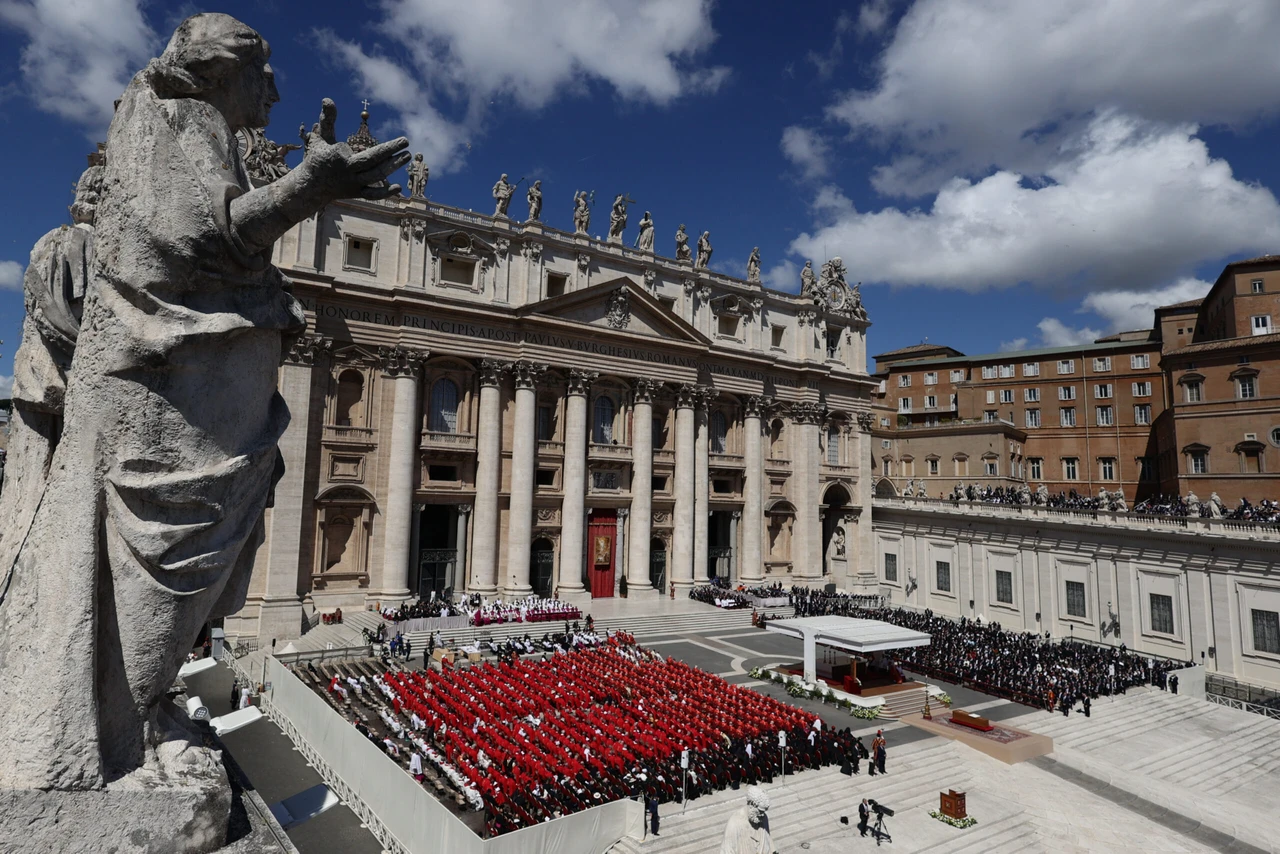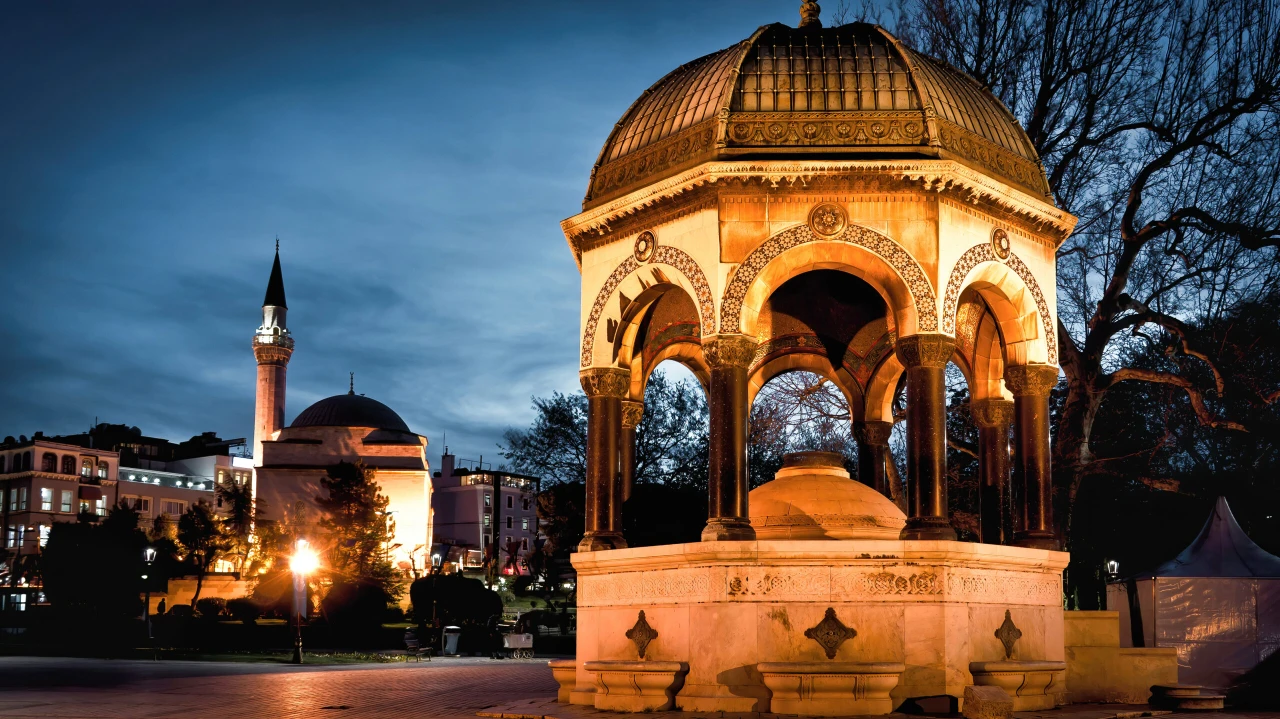Inside the restoration: Challenges of reviving Rubens’ and Rembrandt’s masterpieces
 Photo features Rembrandt's artwork "The Night Watch," accessed on April 5, 2025. (Photo via Smart History)
Photo features Rembrandt's artwork "The Night Watch," accessed on April 5, 2025. (Photo via Smart History)
As the monumental works of Peter Paul Rubens and Rembrandt undergo restoration in public view, the experts involved describe the experience as both “inspiring and stressful.”
Rubens’ “Enthroned Madonna Adored by Saints” and Rembrandt’s “The Night Watch” stand out as two iconic pieces in art history, drawing significant attention during their restoration processes.
Rubens’ painting, housed at the Royal Museum of Fine Arts Antwerp in Belgium, measures 6 by 4 meters (20 ft x 13 ft), while Rembrandt’s masterpiece, displayed at the Rijksmuseum in Amsterdam, Netherlands, measures 3.63 by 4.37 meters (12 ft x 14.3 ft). The massive scale of these works, combined with their intricate details, dramatic use of light and shadow, and dynamic compositions, offers viewers a rare glimpse into the art preservation process.
Restoration process with extensive research
The initial phase of restoration involves extensive research, with art historians examining the painting’s history, techniques, and materials used by the artist. Scientists then conduct a variety of analyses to assess the artwork’s current condition. Through X-ray and ultraviolet scans, restorers can examine lower layers of the painting and any prior interventions in detail. Chemical analyses help determine the composition of the paints, varnishes, and priming materials.
After conducting these tests, experts determine the most appropriate restoration methods. Dirt and old varnish are carefully cleaned under a microscope, and any cracks or missing sections are filled in a way that aligns with the artist’s original style. Finally, a protective varnish layer is applied to preserve the painting’s visual integrity and guard against future damage.

Rembrandt’s inspiring ‘The Night Watch’
Nienke Woltman, an art conservation specialist working on the restoration of The Night Watch, told Turkish news agency Anadolu that the challenges of restoring such an iconic piece were intensified by its size and significance, noting that working in front of an audience is both “inspiring and stressful.” Woltman explained that while the team couldn’t hear visitors, they could feel their presence.
“We really had to get used to it. But in the museum, as you saw, they really made this nice glass wall. So, where we are working, it’s very quiet,” she said, emphasizing the importance of a quiet environment to maintain focus during the restoration.
The painting was placed on a special canvas that allows it to be moved left, right, up, and down for easier access. Additionally, two separate elevators positioned in front of the canvas help the team reach difficult areas.

Preserving light and shadow
Woltman highlighted that preserving the chiaroscuro (light-and-shadow play) that is characteristic of Rembrandt’s works was a major focus. She noted that the extensive testing and use of scientific equipment were crucial to ensuring minimal retouching while preserving the painting’s original features.
She also pointed out that Rembrandt’s style differed from other painters of his time. “There’s a long tradition of militia paintings in the Netherlands. That’s also the case for the militia group you see in The Night Watch,” Woltman explained. “But, they were usually painted in very static postures.”
Contrary to popular belief, Woltman suggested that the painting might have depicted a daytime scene, noting that the title The Night Watch was given later and may have resulted from the yellowing of the varnish, which led to the mistaken impression of darkness.
Regarding Rembrandt’s possible reaction to the restoration, Woltman humorously remarked: “I think he would turn in his grave and say, ‘What are you doing? Just leave my painting alone!’ But then I also hope that at the end of the project, he would maybe think, ‘Okay, well, you did good.’”
Challenges encountered in restoring Rubens’ work
Curator Koen Bulckens and restorer Ellen Keppens, who are working on the restoration of Enthroned Madonna Adored by Saints, shared insights into their meticulous efforts. Bulckens noted that Rubens’ large altarpieces were originally intended for churches, and the spacious setting in the museum allowed for the restoration process to begin.
Keppens explained that because of the painting’s size, it had to remain upright at all times during the restoration, making the process physically demanding. She described the experience of working in front of the public as “inspiring but stressful,” with constant interaction from visitors.
When the varnish was removed, the painting’s original colors appeared matte, which intrigued visitors. Keppens explained that this matte finish is the true color, and new varnish would be applied to restore the vibrancy.
Unveiling details with technology
Bulckens highlighted the role of technology in uncovering previously hidden layers of paint. “With the development of technology, we are now able to visualize layers of paint not visible to the naked eye,” he explained. Keppens further elaborated on this, revealing that the restoration process had uncovered hidden details, such as angels originally painted with black wings. These wings were later covered by Rubens, but through modern techniques, the team was able to detect them.
Keppens stressed that if restoration techniques change in the future, the work being done now is reversible, ensuring that future conservators can continue the process without difficulty.
“I hope Rubens would be very pleased,” Keppens concluded. “After so many centuries, people are still loving his work and giving it so much time, treatment, and care.”
The restoration of Enthroned Madonna Adored by Saints is expected to be completed this summer, marking the end of a two-year process.



